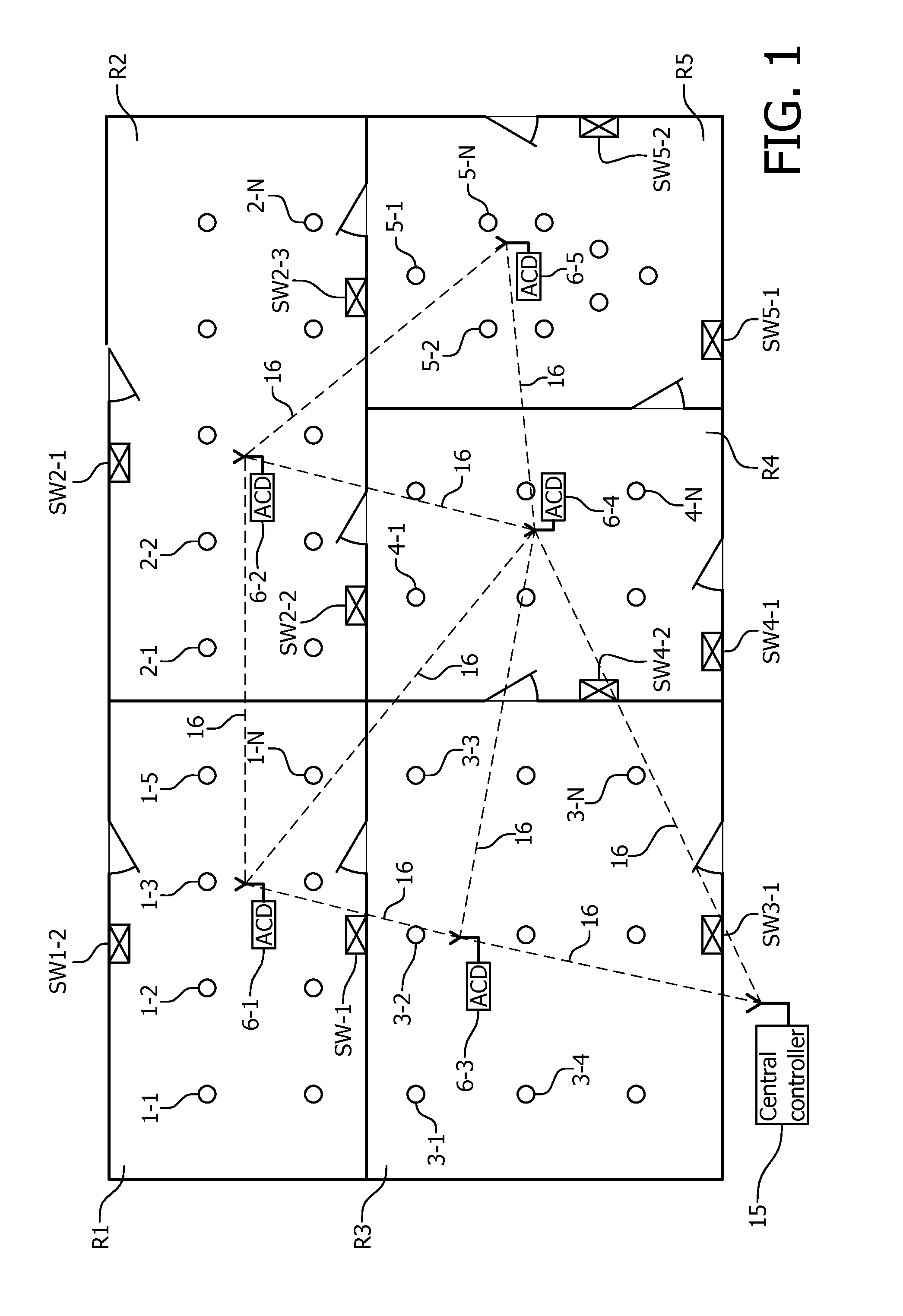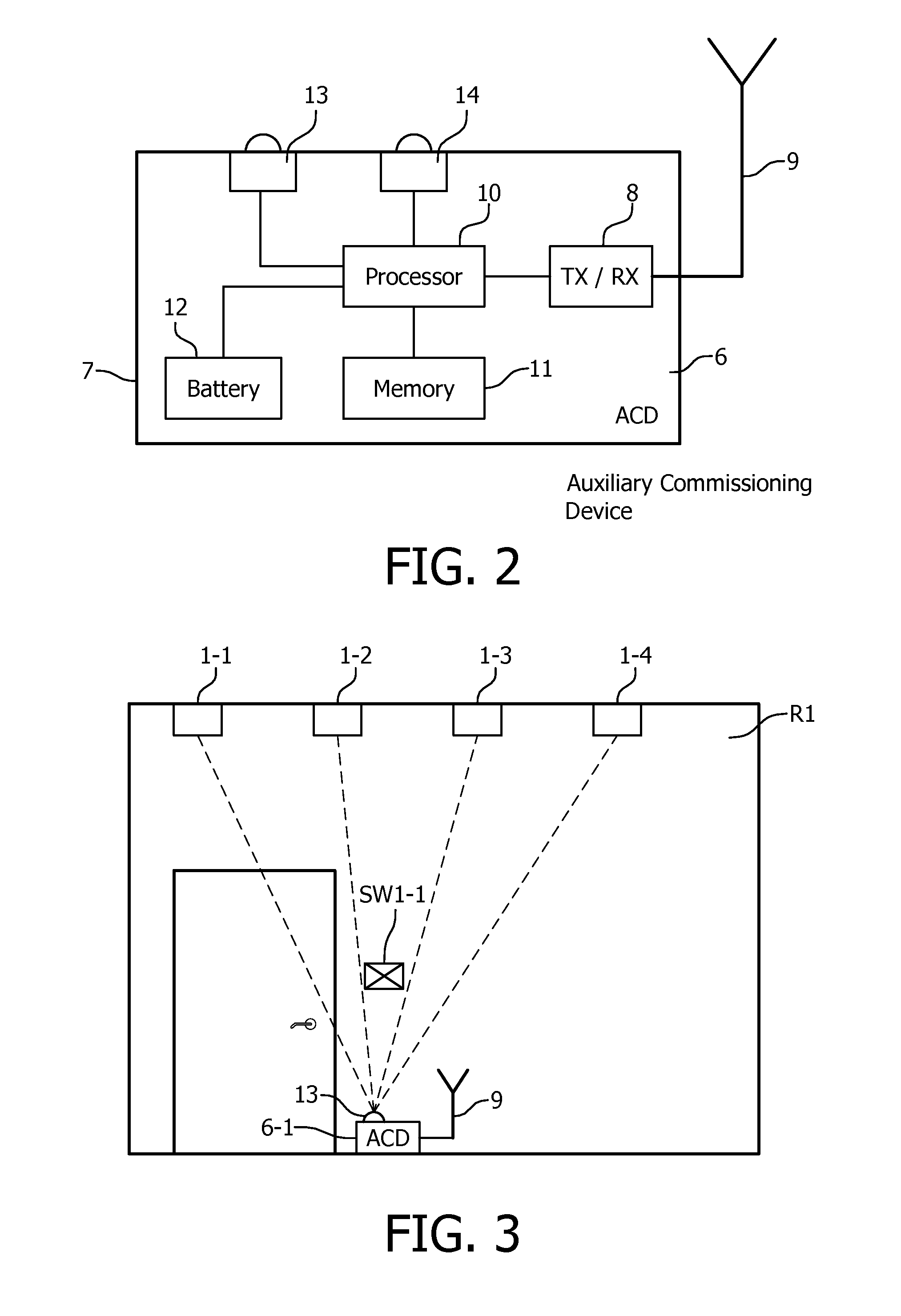Commissioning of lighting systems
a lighting system and commissioning technology, applied in the field of commissioning lighting systems, can solve the problems of high labor intensity, complex and long commissioning process, and high cost of building infrastructure systems installation
- Summary
- Abstract
- Description
- Claims
- Application Information
AI Technical Summary
Benefits of technology
Problems solved by technology
Method used
Image
Examples
Embodiment Construction
[0021]Referring to FIG. 1, an office premises is shown in plan view that comprises a number of spaces, in this example rooms R1-R5. Whilst the example hereinafter describes office premises, the luminaires could be installed in other commercial premises such as a warehouse, marshalling yard or non-commercial premises such as a domestic dwelling. Ceiling mounted luminaires 1-1; 1-N are arranged in room R1 and similarly rooms R2-R5 include respective luminaires 2-1; 2-N . . . 5-1; 5-N. The luminaires may be installed during construction of the premises or as a retro-fit. Common practice is to arrange the luminaires in a network to be controlled centrally so that effective environmental control can be performed for the entire premises. Suitable network protocols include Digital Address Line Interface (DALI), Zigbee, LLM, Dynet, Starsense, Ethernet and wifi. Additionally, local switches are provided for individual workspaces and in this example R1 includes switches SW1-1 and SW1-2. Switc...
PUM
 Login to View More
Login to View More Abstract
Description
Claims
Application Information
 Login to View More
Login to View More - R&D
- Intellectual Property
- Life Sciences
- Materials
- Tech Scout
- Unparalleled Data Quality
- Higher Quality Content
- 60% Fewer Hallucinations
Browse by: Latest US Patents, China's latest patents, Technical Efficacy Thesaurus, Application Domain, Technology Topic, Popular Technical Reports.
© 2025 PatSnap. All rights reserved.Legal|Privacy policy|Modern Slavery Act Transparency Statement|Sitemap|About US| Contact US: help@patsnap.com



